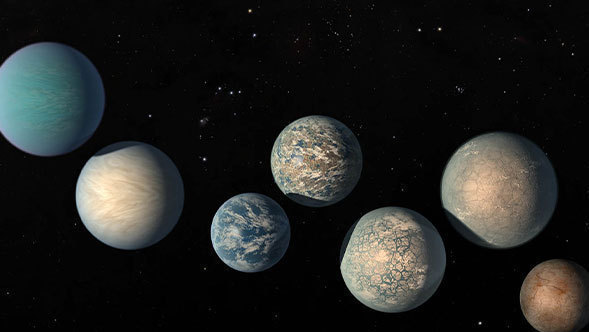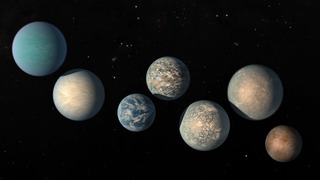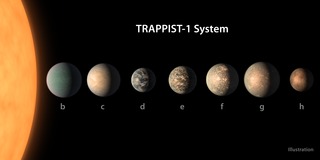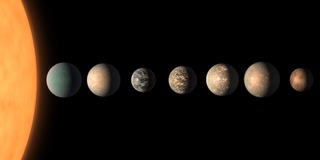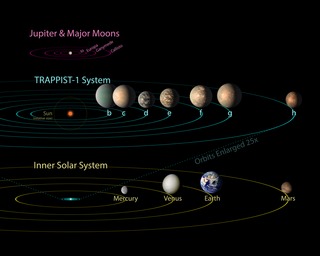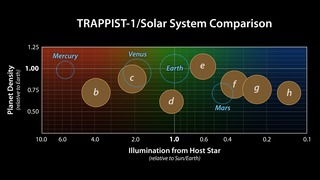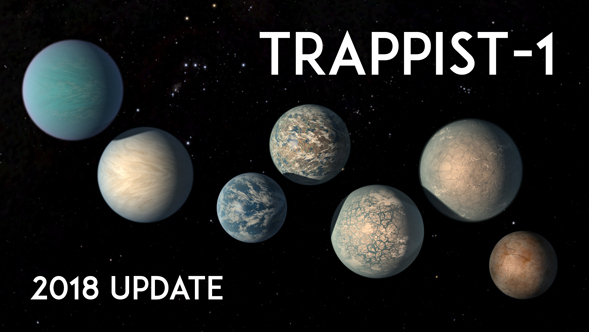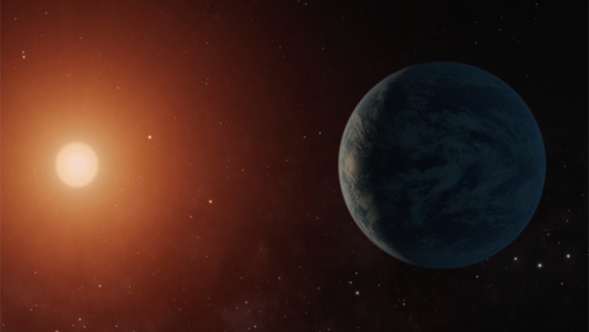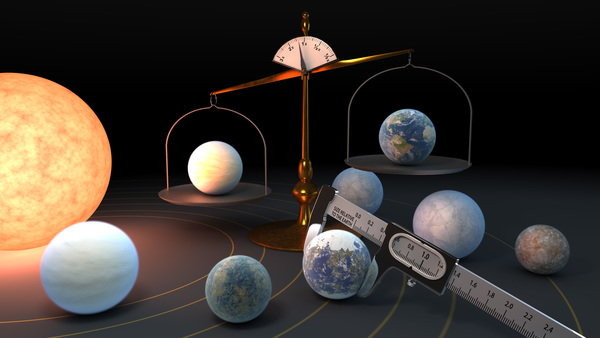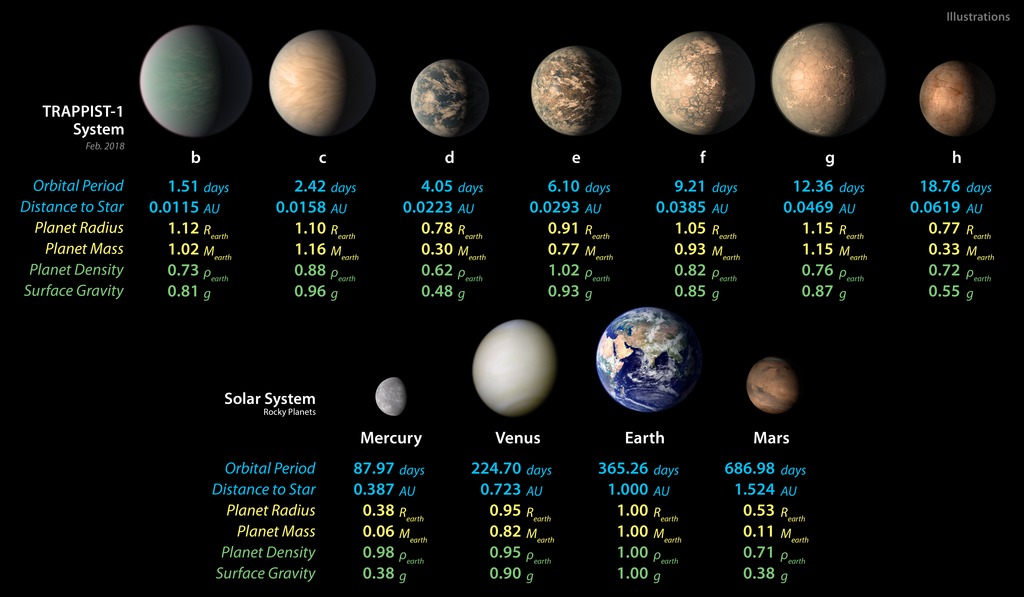
Credit: NASA/JPL-Caltech/R. Hurt, T. Pyle (IPAC)
Artwork • February 5th, 2018 • ssc2018-04c
ssc2018-04c
This chart shows, on the top row, artist concepts of the seven planets of TRAPPIST-1 with their orbital periods, distances from their star, radii, masses, densities and surface gravity as compared to those of Earth. These numbers are current as of February 2018.
On the bottom row, the same numbers are displayed for the bodies of our inner solar system: Mercury, Venus, Earth and Mars. The TRAPPIST-1 planets orbit their star extremely closely, with periods ranging from 1.5 to only about 20 days. This is much shorter than the period of Mercury, which orbits our sun in about 88 days.
The masses and densities of the TRAPPIST-1 planets were determined by careful measurements of slight variations in the timings of their orbits using extensive observations made by NASAs Spitzer and Kepler space telescopes, in combination with data from Hubble and a number of ground-based telescopes. These measurements are the most precise to date for any system of exoplanets.
In this illustration, the relative sizes of the planets are all shown to scale.
About the Object
- Name
- TRAPPIST-1
- Type
- Planet > Type > Terrestrial
- Distance
- 39.6 Light Years
